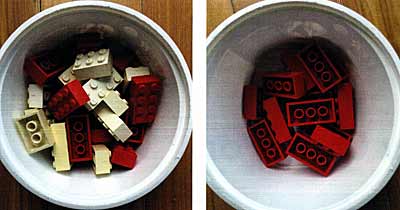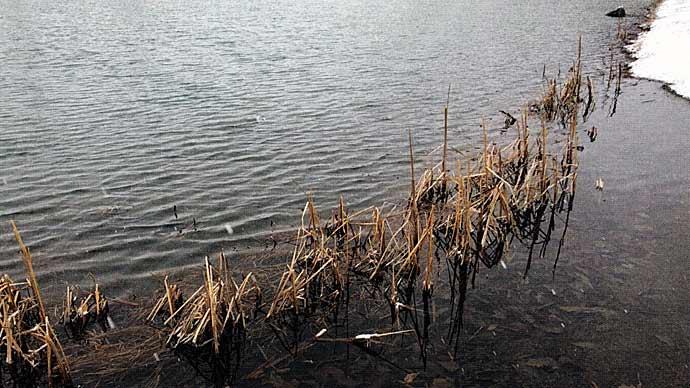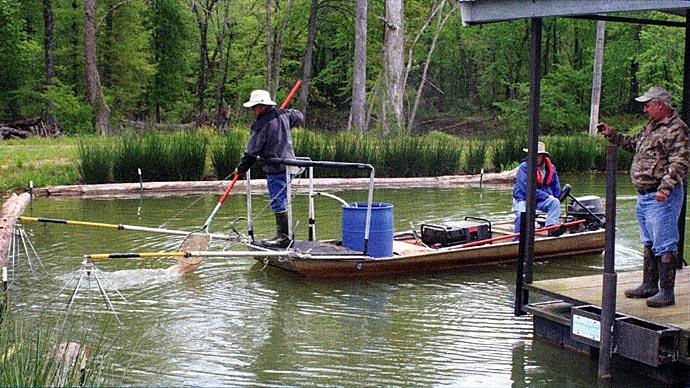Biodiversity is the presence of many different plants and animals in an environment. An example of one of the most biodiverse places on earth is the Amazon jungle. My husband, "The Fish Professor", Mark Cornwell, has spent a week at a time, three different times on one tiny section of the Amazon River in Peru. During that time, he and his college students have cataloged (found, observed and taken pictures of) more different fish species than there are in all of our home state of New York. In three short weeks, as visitors of one small village, they saw more fish species than exist in the entirety of New York State! That is diversity! Examples of the opposite of diversity are large crop fields or a lawn, both of which have one plant species, a few kinds of insects that make their home near that one plant species, and possibly a few visitor species looking for a meal. Around us, various birds, deer, raccoons, muskrats, and beaver often eat corn from cornfields, but they do not live in cornfields.

Biodiversity is considered a positive, or good, trait in an environment. Observation shows that biodiverse habitats are healthier and more resilient. A resilient habitat is a habitat that can withstand a disaster like disease, fire, flooding, hurricane, or drought and still survive and become healthy again in a short period of time. For example, fire resistant plants may have seed pods that need fire to open and grow; these are plant species that thrive in areas that burn often. Hurricane resistant coastal plants might be able to withstand brief periods saltwater flooding, thrive in freshly cleared areas or have seeds that travel during and grow quickly after a hurricane. Conversely, the ever-present oak and maple trees in my area survive by persisting as young plants and then becoming taller and stronger than all the other trees in the area, ultimate shading out all their competitors. The more variety of species, each with their own unique survival skills, the greater the diversity and the higher the chance that an environment will withstand disaster.
Biodiversity Exercise
Biodiversity can also keep a pond healthy and resilient; the pictures from this small experiment will help you understand how. Take a look at the pictures with this article. Picture 1 is of a bowl (a pond) full of the Legos (plants and animals) that make up the food web in the pond. There are many shapes, sizes and colors of Legos in the bowl; this represents biodiversity.
Remember that this Lego analogy falls short in one major place; nature can increase population sizes of any species with the function of reproduction, as long as enough members of the species remain in or near the environment.

In the second picture all the yellow rectangular Legos are removed, but the bowl of Legos is still diverse. The food web is still very much intact. This represents the idea that a diverse pond's food web is not overly disturbed by the removal of some of a species (yellow Legos in this case). The pond owner might be disturbed if the yellow Legos represent Largemouth bass, but the pond food web is okay at that point. If we continue to imagine that the yellow Legos represent Largemouth bass and the rectangular Legos represent big bass, the remaining little bass (smaller yellow Legos) will eventually grow larger and reproduce if conditions allow.
In the third picture all the yellow Legos are removed but there is still a great deal of variety in the bowl; the food web is still diverse even without any yellow Legos. If we continue with the idea that yellow Legos represent Largemouth bass the pond will have to either be re-stocked (humans place more Largemouth bass in the pond) or it will be a long time, maybe never, before there are Largemouth bass in the pond again. However, the ponds' food web is likely fine, and the pond will continue to be healthy. If we allow the Legos to represent another species, like a Red breasted sunfish, it is probable that only the most observant people will even notice that the Red breasted sunfish (yellow Legos) are gone, and the food web will remain healthy.
The fourth picture is of a new pond with only red and white Legos in it and in the fifth picture all the white Legos are gone from the new pond. Imagine that the red Legos are bass and the white Legos are golden shiners (baitfish). What will happen to the food web of this pond when the golden shiners are removed (picture 5)? The bass will only have other bass to eat; the food web has collapsed! That means that the bass will become stunted and their population numbers will decrease. This pond does not have biodiversity, and as a result any situation that removes the one food source (white Legos) will cause the whole food web to collapse! Biodiversity creates stable healthy environments that withstand disease, disaster and general change. Humans make their ponds, their environments and the world a healthier place by promoting biodiversity whenever and wherever possible.
Christine Cornwell is a horse trainer who lives in upstate New York with her husband and son. She has worked for the New York State Department of Environmental Conservation and was a high school science teacher. Sharing her love of a healthy, natural world is a daily passion.



